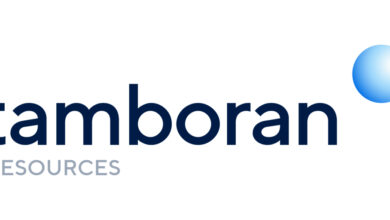3-Day Online Seminar: Understanding the US Medical Device Design Controls What, Why, and How – August 3rd, August 10th & August 17th, 2021 – ResearchAndMarkets.com

DUBLIN–(BUSINESS WIRE)–The “3-Day Web Seminar Understanding Medical Device Design Controls What, Why, and How” conference has been added to ResearchAndMarkets.com’s offering.
This Design Control course is US-focused.
The participants will gain a fundamental understanding of how medical devices are regulated in the US: the main legal basis, FFDCA (21 U.S.C. 301) and the specific Medical Device Quality Systems Regulation, and the comparison/contrast of the GMP requirements imposed on the medical devices and pharmaceutical products in the US.
In addition, the participants will be introduced to a brief overview of the relevant global regulatory framework including the EU MDR 2017 and the latest ISO standards (ISO 13485:2016).
Fortunately, Alan Golden Principal at Design Quality Consultants, LLC with over 30 years’ experience working in the medical device industry will focus on introducing the attendees to the regulatory requirements stipulated under the US Medical Device Quality Systems Regulation. Each of the seven key elements of Design Control compliance will be briefly reviewed. In addition, specific GMP requirements, submission dossier preparation throughout the Design Control lifecycle, and submission strategy will be discussed.
Learning Objectives
- Describe the legal basis & industrial standards regulating the manufacture of medical devices.
- Gain an understanding of the regulatory framework for Design Control and recommendations to effectively meet the requirements of Design Control.
- Describe general regulatory requirements pertaining to design control within the quality system and regulation, design control procedures, safety/risk management, documentation, manufacturing transfer strategies, and strategies for integrating general quality system procedures into design control.
- Outline steps and tools to establish and implement effective design controls and quality management systems.
Who Should Attend:
This course will be most valuable to Medical device industry engineers, engineering managers, regulatory affairs professionals, scientists, and quality engineers.
Personnel involved in product development, manufacturing, quality assurance, or regulatory affairs that do not have an in-depth knowledge of the Design Control, and its workings, will benefit from this course. Additionally, this program can be customized and delivered on-site for more experienced personnel (including middle and upper management) to update and broaden their knowledge of the FDA’s Design Control requirements.
Agenda:
Introduction
- My background and experience
- Why design control
- Purpose of design control
- Benefits of design control
- Overview of design control
Scope and Responsibilities
- Devices requiring design control
- Scope and responsibility definitions
- Management responsibilities
Design and Development Planning
- When a plan is required
- Elements of a plan
- Project management
- Planning tools
- Change of plans
Design Input
- Design input definitions and requirements
- When research ends and development begins
- Concept vs. design input
- Sources of design input
- Inadequate design input
- Types of design input
- Document controls
Design Output
- Design output definitions and requirements
- Examples of design outputs and specifications
- Relationship between design output and the product’s Device Master Record (DMR
Design Reviews
- Relationship of design reviews to design control
- Purpose of design reviews
- Quality system requirements of design reviews
- Design review board
- Number and types of design reviews
- Design review documentation
- Conducting design reviews
Design Verification
- Relationship of design input, design output and design verification
- Design verification definitions and requirements
- Verification activities
- Design validation documentation
- Trace matrix
Design Validation
- Design verification vs. design validation
- Design validation definitions
- Design validation requirements
- Design validation documentation
- Clinical trials vs. clinical evaluation
- Design validation and planning
Test Method, Process, and Software Validation
- Why validate test methods, manufacturing processes, or software?
- Relationship between test method, process and software validation to design control
- Relationship between process and test method validation
- When to validate test methods and processes
- Software validation
Risk Management
- Risk analysis requirements
- Risk analysis terms and definitions
- Risk management and activities
- Risk management tools
Design Changes
- Design Change requirements
- Application of design changes
- Change control objectives
- 5th interactive activity: Design change and change control
Design Transfer and Process Validation
- Design transfer requirements
- Changes during design transfer
- Relationship of design transfer and validation
- Process validation requirements
- Process validation definitions and requirements for:
- Equipment
- Process
- Product performance
Design History File
- Design History file definition and requirements
- Purpose
- Structure
Final Comments and Questions
For more information about this conference visit https://www.researchandmarkets.com/r/1sodze
Contacts
ResearchAndMarkets.com
Laura Wood, Senior Press Manager
[email protected]
For E.S.T Office Hours Call 1-917-300-0470
For U.S./CAN Toll Free Call 1-800-526-8630
For GMT Office Hours Call +353-1-416-8900




